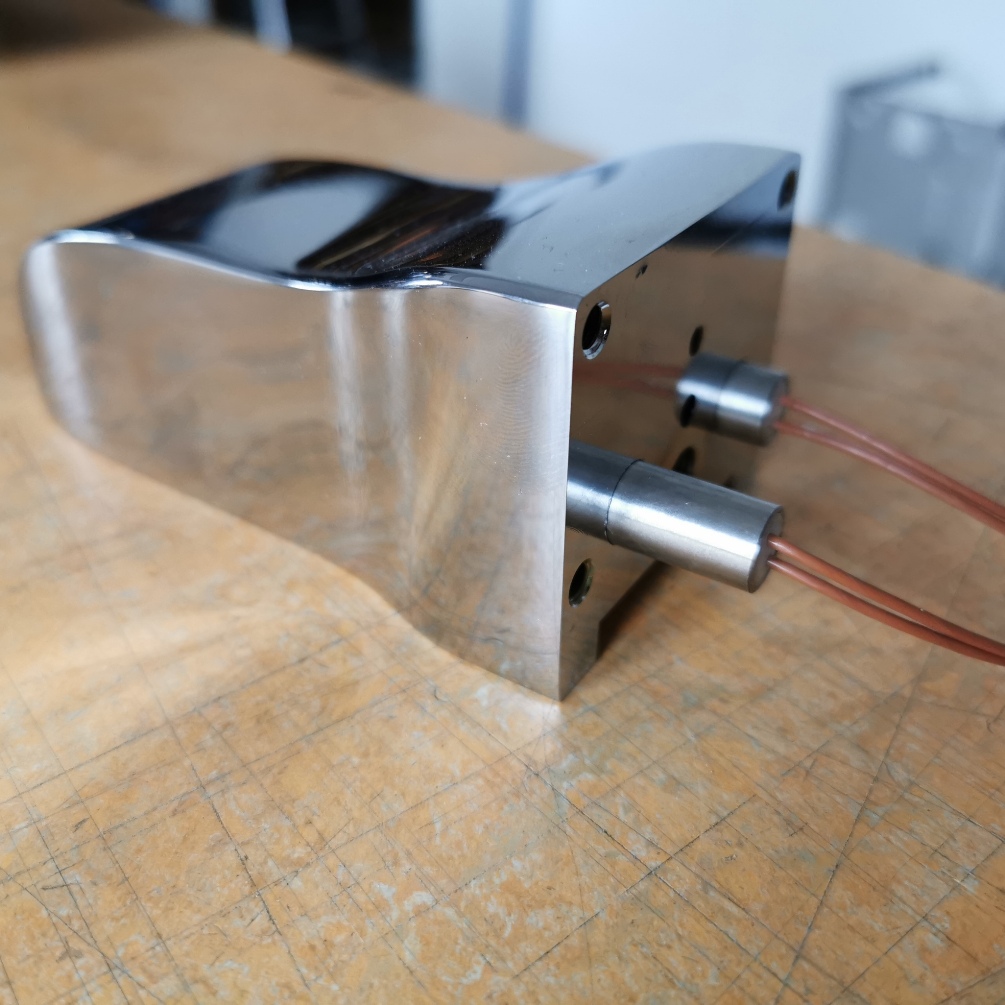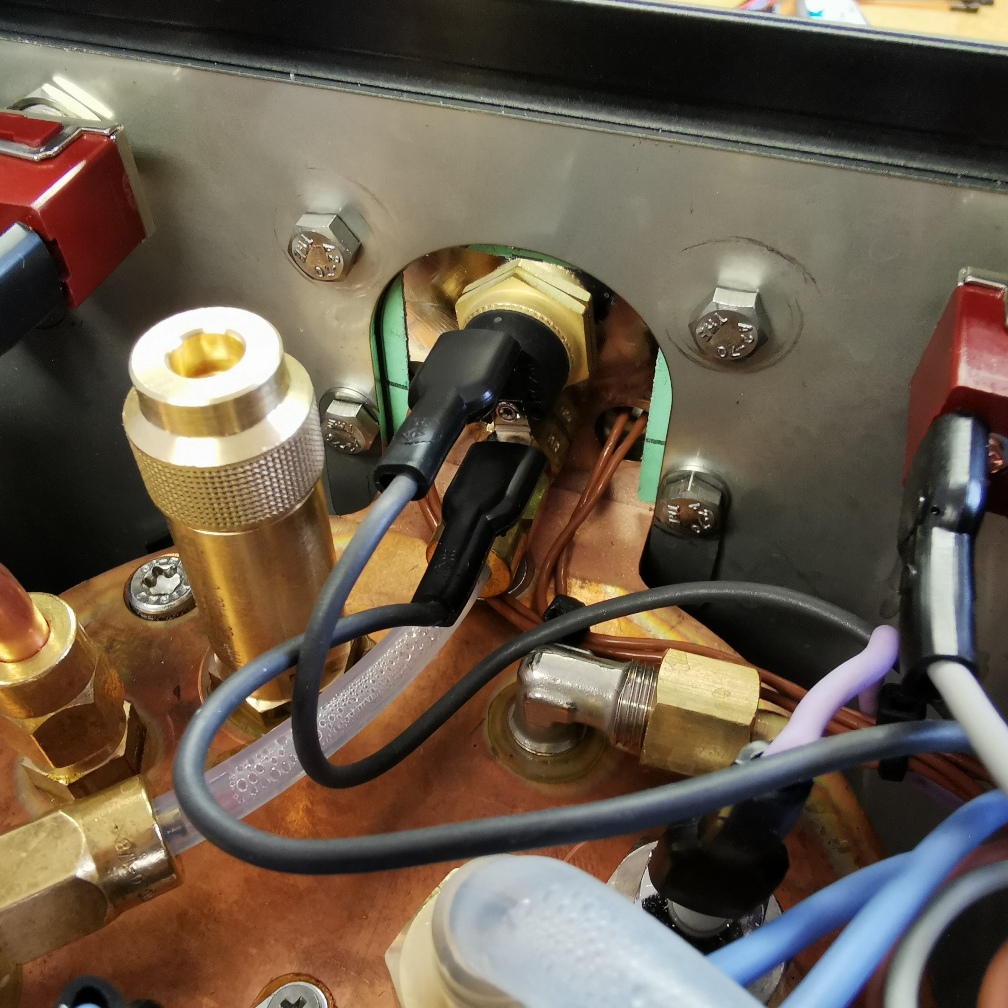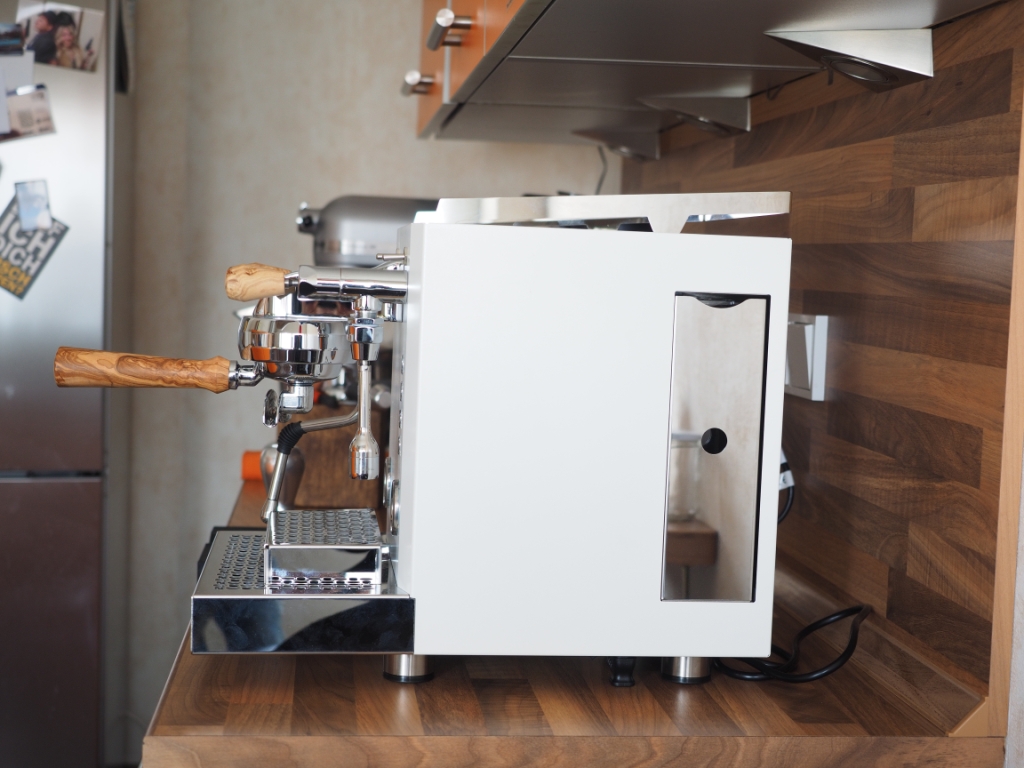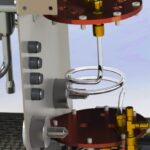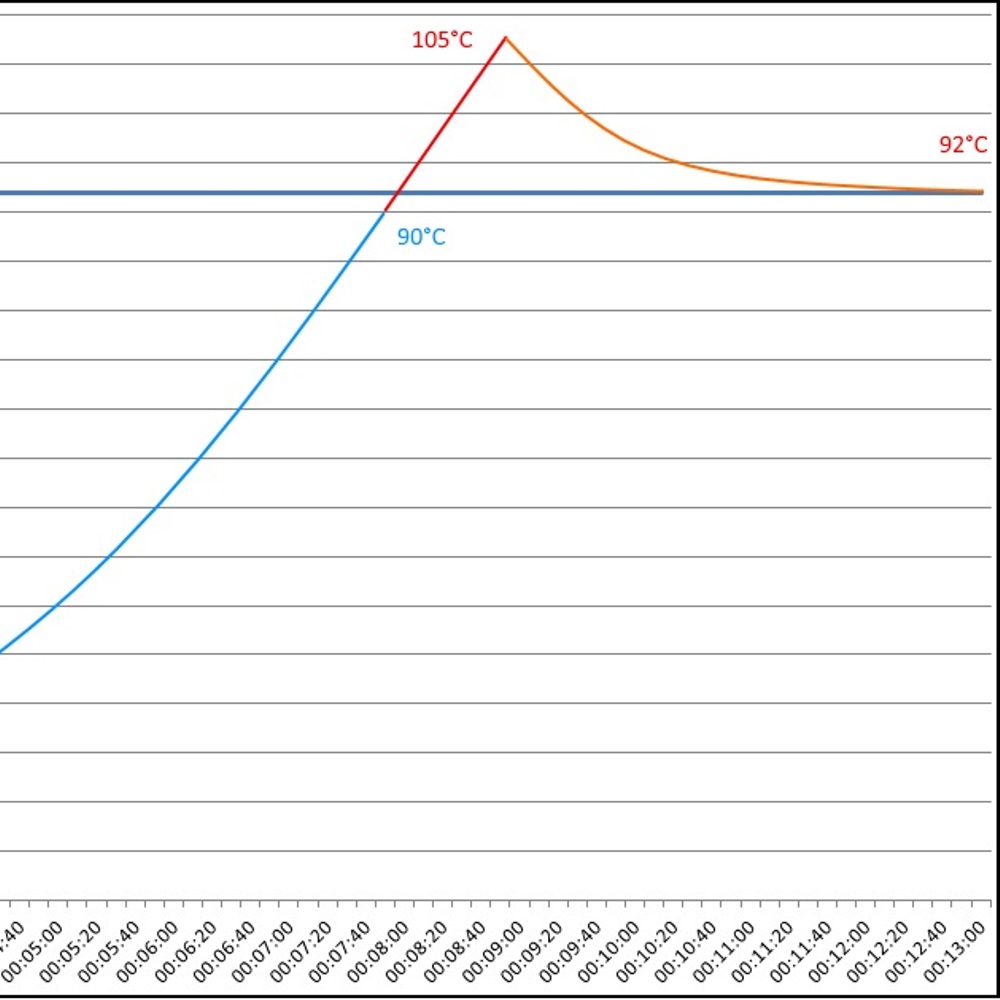
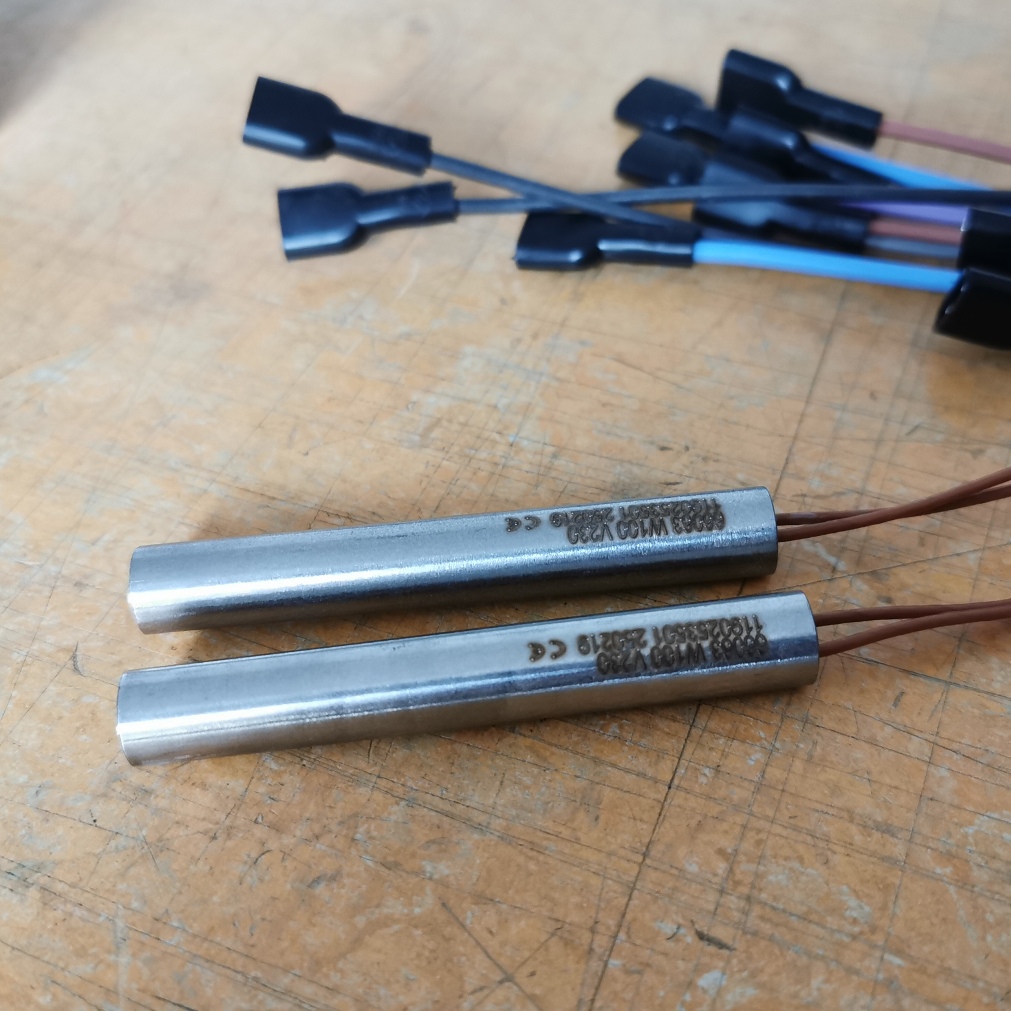
Once around 90 °C has been reached at the inner end of the brew group, the heaters can be switched off.
But then the rest of the machine is not yet warm enough and the thermal bridge does not transport enough heat to keep the brew group at the desired temperature. Since we can programme the control unit, we use a trick. We overheat the brew group with the fast heating cartridges, which in this phase supplies heat to the rest of the machine. After about 12–13 minutes this heat is distributed and the machine is really well heated through for a first good extraction. And from here on, the thermal bridge also supplies enough constant heat that the heating cartridges can be left out.
Without this overheating, the temperature would drop again to 90 °C or below for a longer period of time. In principle, you could also use heating cartridges with a lower output (approx. 2 x 50 watts) and then the brew group and machine would be ready at the same time—but only after ~ 25 minutes.
The control unit signals this targeted overheating and transfer of heat to the machine by slowly flashing the brew group LED (2nd LED from the top). If the 2nd LED from above is off, the first espresso can be extracted without hesitation.
Explained in more detail
When a machine is considered to be heated up is not really defined. In general, one can say: when the first extraction is essentially like the following. To this end, all relevant parts of the machine must (as far as possible) be at the correct temperature. Before developing the Xenia, we considered that we wanted a machine that would reach the right temperature quickly and that would also be heated through quickly - in other words, it would have a constant, steady temperature early on, which would hardly change afterwards.
So the Xenia was developed accordingly.
The following graphic shows the measurement curves of a Xenia for 2 measuring points in the brewing group—which is certainly the most important element—recorded over a longer period of time.
The absolute numbers are less important in the following explanation because they are not particularly meaningful. And they always vary a little from machine to machine. Rather, it is about the development of the temperature over time and its meaning/ relevance.
One of the measuring points in the following diagram in the group is near the heat source (boiler) and one is more distant.
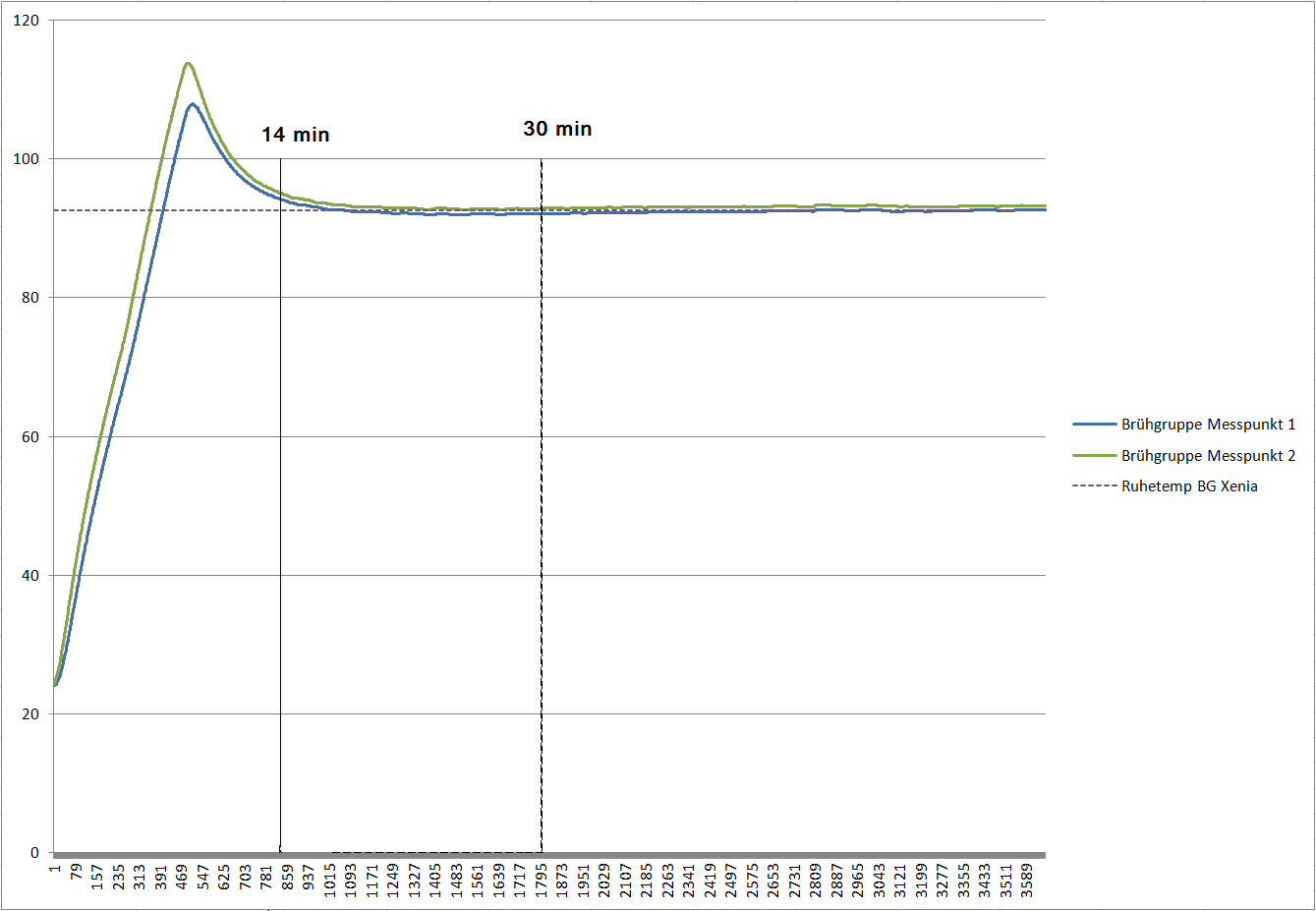
Viewed in this way, it can be said that the machine has almost exactly reached the operating temperature after 14 minutes without brewing. This is also shown by experience: after 13–15 minutes you can extract coffee with an output of 2 × 100 watts and will have a result that is very similar to the following extractions.
In the case of an exposed brew group, however, there are parts that are very far away from the boiler as a heat source and, of course, do not heat up that quickly or do not get warm at all. Because of their small size, they are not as important as the 3.2 kg group. But you can check conditions at parts positioned further away. For example concerning the sieve or the shower screen. You can determine the temperature quite well on the shower screen. And this value is also a good comparison value with other machines, because this part is easily accessible on any machine in order to position a sensor. We placed a sensor at right angles from below on the metal of the bell near the centre for measurement.
To assess the values of the Xenia, I determined the resting temperature for an E61-HX machine at the position of the shower screen. If we assume that a standard E61-HX machine is considered to have been heated through after 30 minutes, then at this point in time the shower strainer measured 77.5 °C. So this is the temperature for a fully heated E61-HX machine.
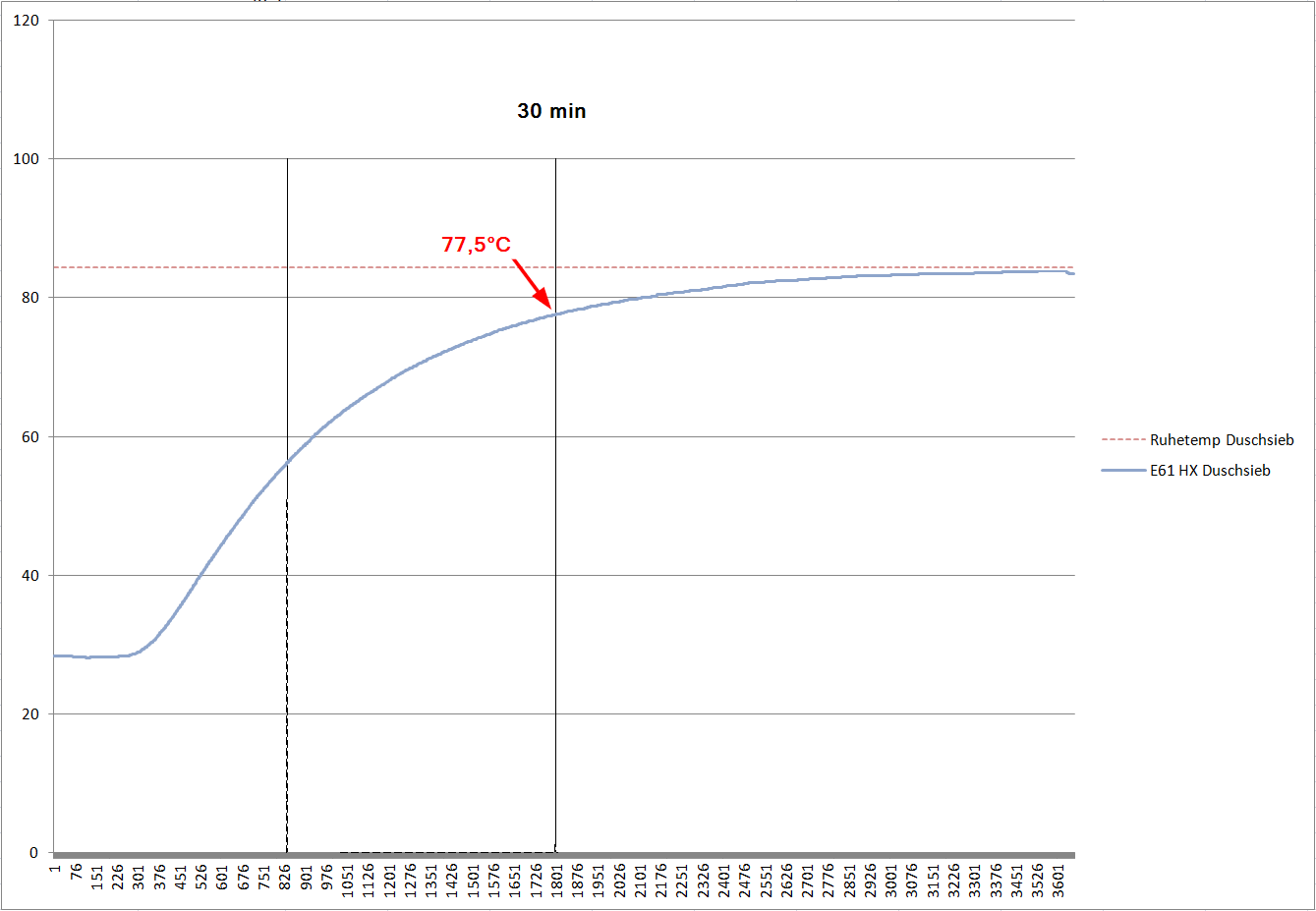
If you look at the curve of the Xenia, you can see a different run of the curve:
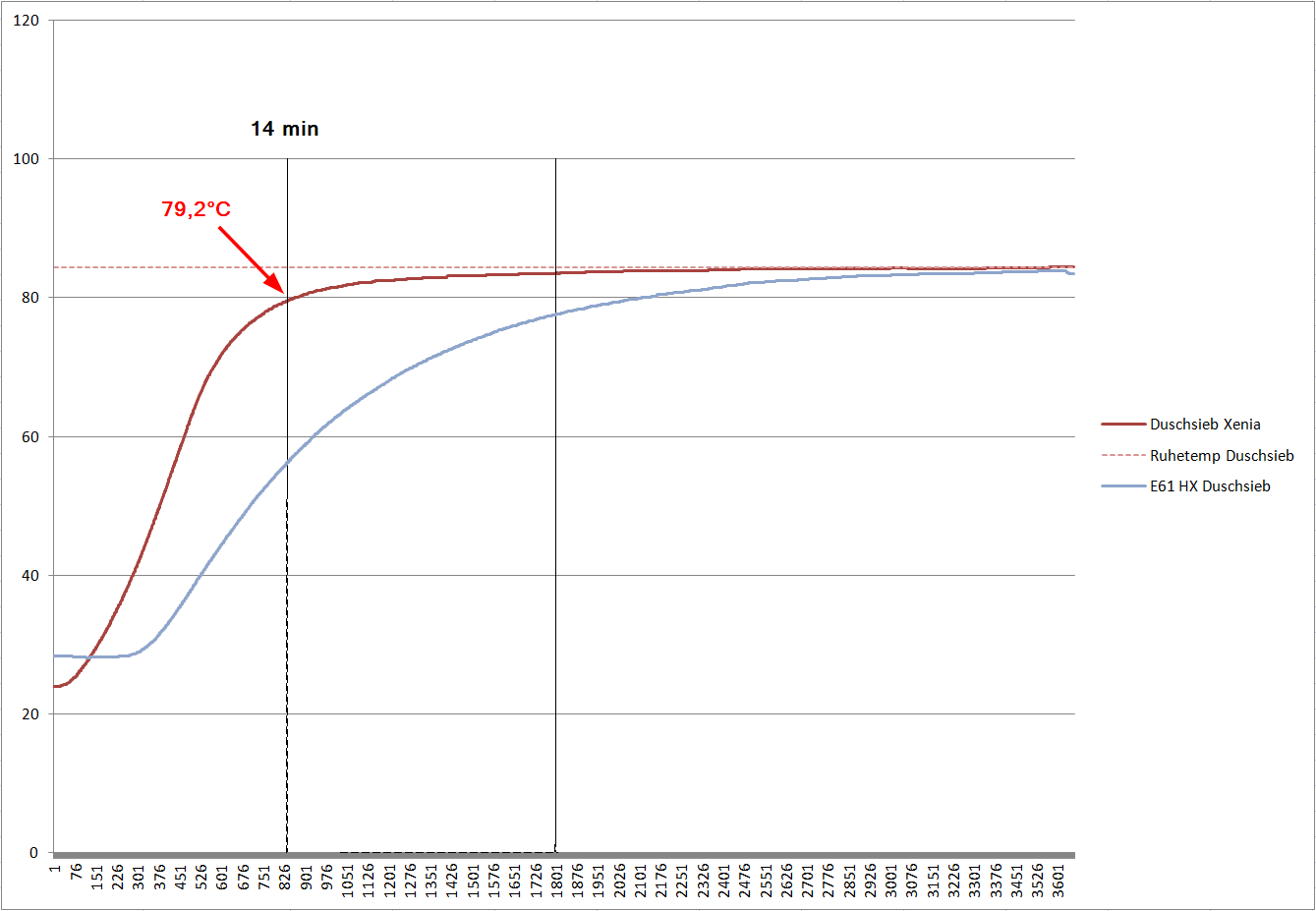
Here is the video for the measurements as proof.
The measurement on the E61-HX machine was repeated twice. However, it is conceivable that other E61-HX machines have different heat-up times. With empty extractions, you can certainly shorten the time with an E61-HX machine—but possibly at the price of an unknown or deviating brewing temperature.
So it is quite understandable and justified to say that the Xenia is completely operative after 14 minutes.
